A properly fitted cat harness is paramount when you plan to explore the great outdoors with your feline friend. While the term “escape proof cat harness” is often used, the reality is that no harness is truly escape-proof. However, with the right type of harness and careful fitting, you can significantly minimize the risk and ensure your cat’s safety and comfort during your adventures. This guide will walk you through the different types of cat harnesses and leashes available, answer frequently asked questions, and recommend some of our favorite products to help you make the best choice for your kitty.
Exploring Different Types of Cat Harnesses
When it comes to cat harnesses, there are several styles to consider, each with its own set of advantages and disadvantages. The most common types include H-style harnesses, vest harnesses, minimal style harnesses, and jacket-style harnesses. Understanding the nuances of each type will help you select the perfect cat harness and leash combo for your pet’s needs and personality.
H-Style Harnesses
Characterized by their “H” shape, these harnesses are among the most minimalistic designs available. Often favored for introducing cats to harnesses, H-style harnesses have minimal contact with the cat’s body. You can find variations that either slip over the cat’s head or fasten around their neck.
Why We Advise Caution with H-Style Harnesses: The design of H-style harnesses can exert considerable pressure on a cat’s neck, especially during sudden movements or if your cat pulls on the leash. This pressure is similar to the strain a dog experiences when pulling against a collar, potentially leading to choking or neck injuries. For this reason, while they may seem simple, H-style harnesses are not always the safest choice.
Minimal Style or Y-Shape Harnesses
Minimal style harnesses, also known as Y-shape harnesses, are a step up from H-style designs. They incorporate an additional strap that connects the neck piece to the chest strap. This seemingly small change makes a significant difference by distributing pull pressure across the cat’s shoulders rather than directly on the neck. While a better option than H-style, many minimal harnesses still feature thin straps. If your cat is prone to pulling, even this style might place undue strain on their neck and shoulders.
Important Consideration for H-Style and Minimal Style Harnesses: A significant drawback of both H-style and minimal style harnesses is the potential for cats to slip out of them, especially if not properly fitted. Accurate measurements are crucial before purchasing. (See below for a guide on how to measure your cat for a harness).
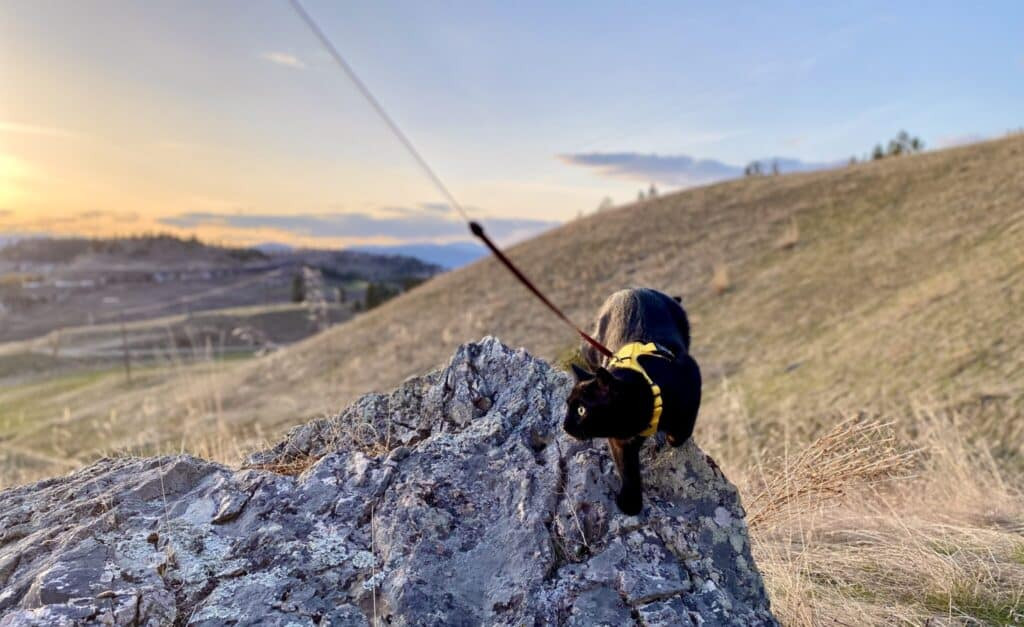 Cat wearing a vest harness and leash, walking outdoors on a sidewalk
Cat wearing a vest harness and leash, walking outdoors on a sidewalk
Vest Style Harnesses
Vest style harnesses are a top recommendation for many cat owners. Resembling a vest, this design distributes leash pressure evenly across the cat’s body. This even distribution is key to preventing strain on the neck and shoulders, making vest harnesses a safer and more comfortable option for extended wear and more adventurous outings. Vest harnesses come in two main types: those that go over the cat’s head and step-in versions. Step-in vest harnesses can offer a slightly snugger fit around the neck area. While some cats might initially resist having a harness placed over their head, like Chumka in our experience, they often quickly adapt, especially when the reward of outdoor exploration awaits!
Jacket Style Harnesses
Jacket style harnesses provide the most body coverage of all harness types. Enveloping a significant portion of your cat’s torso, jacket harnesses tend to fit very securely. This snug fit makes them the least likely style for a cat to escape from. Jacket harnesses can be particularly beneficial in colder climates, offering an extra layer of warmth, especially for cats who aren’t fond of sweaters or jackets. However, in warmer weather, it’s important to consider breathability to prevent overheating. Look for jacket harnesses made from breathable materials or consider a less-covering style during the summer months.
 Cat exploring outdoors on a leash, surrounded by greenery
Cat exploring outdoors on a leash, surrounded by greenery
Key Factors in Choosing the Right Cat Harness and Leash
Now that we’ve explored the different types of cat harnesses, you might have a better idea of which style could be suitable for your feline companion. However, several factors should influence your final decision beyond just the harness style.
Cat Size and Coat Type
Harness sizing varies significantly between brands, and sometimes even within a brand’s product line. What might be a ‘medium’ in one brand could be too small or too large in another. We even experienced this sizing inconsistency with the RC Adventure Cat Harness, highlighting the importance of careful measurement and potentially trying different brands.
Kittens grow rapidly, so opt for a harness with ample adjustability to accommodate their growth spurts. For larger cat breeds, you might even find suitable options in the dog harness section if feline-specific harnesses are too small.
Consider your cat’s coat length as well. Long-haired cats can have their fur caught in buckles or Velcro closures. Harnesses that cover a large part of their body might also lead to fur tangling. For long-haired breeds, simpler harness designs or those with smooth, snag-free materials might be preferable.
Activity Level and Adventure Type
The intended use of the cat harness and leash should guide your choice. For gentle backyard explorations or short trips to the veterinarian, a minimalistic or H-style harness might suffice. However, if you envision more adventurous outings, like hiking trails or exploring nature, a secure vest-style harness is highly recommended. Vest harnesses offer a greater range of motion while providing more security and comfort for your cat during varied terrains and activities.
Medical Considerations
It’s always wise to consult with your veterinarian, especially if your cat has any pre-existing health conditions. Cats with asthma, for instance, might experience discomfort with harnesses that fit snugly around their neck. Similarly, senior cats with arthritis might find harnesses that require significant maneuvering to put on and take off painful or difficult. Your vet can provide personalized advice based on your cat’s specific health needs and limitations.
Climate and Weather Conditions
Consider your local climate when choosing a cat harness. In warmer climates, breathability is crucial to prevent your cat from overheating. Minimalistic harnesses or vest harnesses made from breathable materials are excellent choices for hot weather.
In colder climates, warmth might be a priority. Jacket-style harnesses can provide an extra layer of insulation. Alternatively, you can layer a fleece or jacket over a vest-style or minimal harness for added warmth in colder temperatures, as we often do with Chumka during Canadian winters.
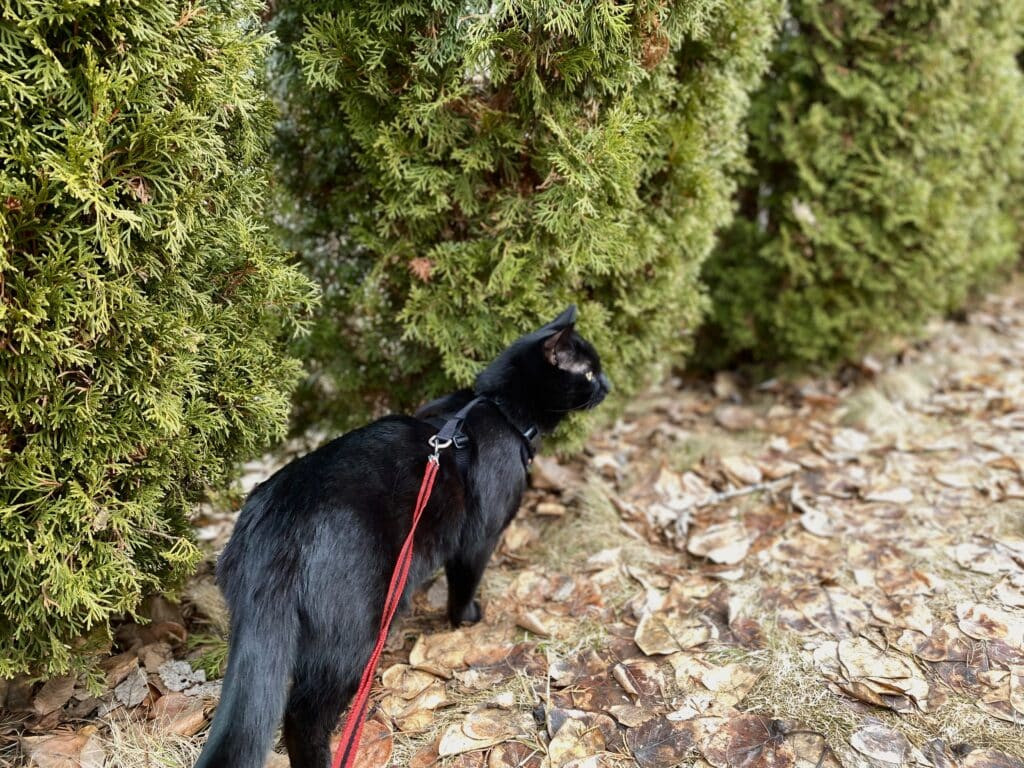 Cat being walked on a leash on a grassy area
Cat being walked on a leash on a grassy area
Properly Measuring Your Cat for a Harness
Accurate measurements are critical to ensure a secure and comfortable fit for any cat harness. Here’s a guide on how to measure your cat for a harness.
Personal Tip: Chumka, being a long and slender cat, taught us a valuable lesson about harness fit. We learned to measure the distance between his neck and girth. While general sizing advice often recommends choosing the smaller size if your cat falls between sizes, we found that for Chumka, this often resulted in harnesses being too short. Knowing this neck-to-girth measurement helped us proactively eliminate harnesses that were likely to be a poor fit right from the start, saving time and hassle with returns.
Frequently Asked Questions About Cat Harnesses and Leashes
Here are some frequently asked questions about cat harnesses, leashes, and harness training to help you get started:
Preparing for Adventures and Harness Training Tips
Before embarking on any outdoor adventures, confirm your cat is up-to-date on all necessary vaccinations. Safety always comes first!
Initiate harness training by simply introducing the harness to your cat in a positive way. We placed the harness near Chumka’s food bowls for a few days to help him become accustomed to its scent. Rewarding your cat with treats and praise whenever they sniff, touch, or interact with the harness will help create positive associations.
The initial harness “try-ons” should be brief and indoors. Be prepared for some amusing reactions – many cats initially walk strangely or even flop over when first wearing a harness! This is a common reaction and they will adjust with time and patience. Starting with a minimal style harness can sometimes ease the introduction, as it offers less physical sensation for the cat.
Once your cat is comfortable wearing the harness and moving around the house while wearing it, you can venture outside. Keep initial outdoor excursions short and in a safe, enclosed area. Observe your cat’s body language for cues about their comfort level and enjoyment. Never force your cat into situations they clearly dislike.
A helpful training tip we learned is to always carry your cat through doorways when going outside. This establishes a clear boundary that they are not allowed to bolt out the door unsupervised, which has been invaluable in preventing Chumka from escaping.
Can You Teach an Old Cat New Tricks?
Absolutely! While it might require more patience and time, cats of any age can learn to enjoy adventures with a harness and leash. Bao Zi (@bestadventurecat) is a fantastic example – she started her harness training journey at four years old! Bao Zi’s Instagram page is an excellent resource for training tips and inspiration for adventure cat pawrents.
How Long Does Cat Harness Training Take?
There’s no one-size-fits-all answer to this question. The duration of harness training varies greatly depending on your cat’s individual personality, age, and previous experiences. Younger cats may adapt more quickly than older cats, but this isn’t always the case. It can take anywhere from a few hours to several weeks for a cat to become fully comfortable wearing a harness and walking confidently on a leash. Patience, positive reinforcement, and consistency are key to successful harness training.
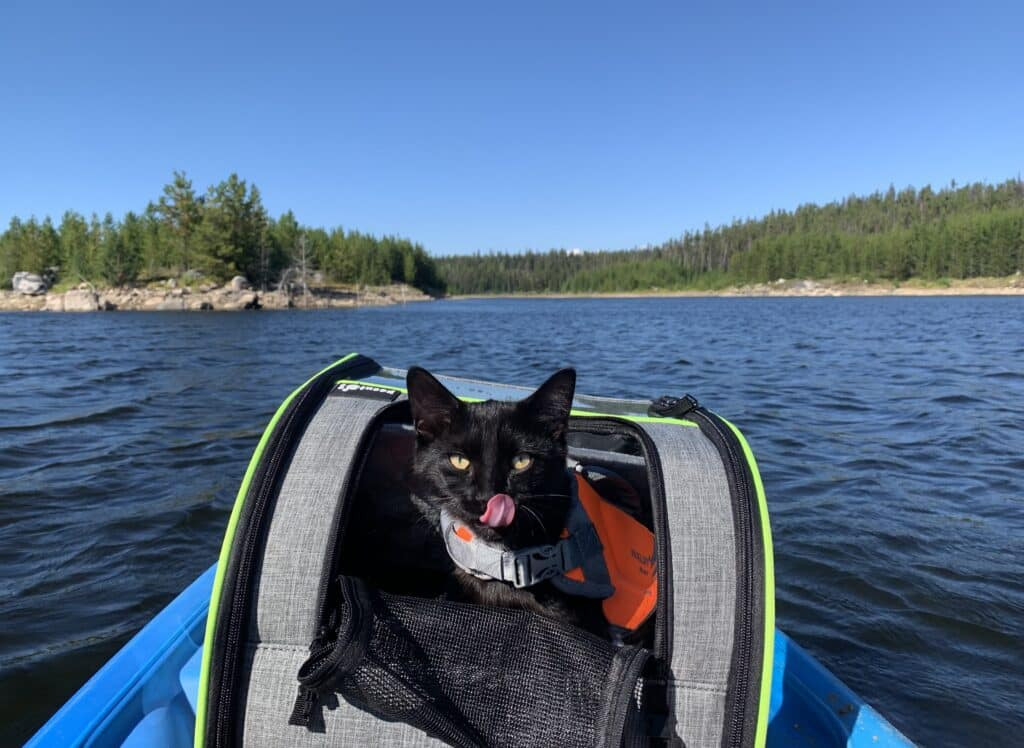 Cat in a backpack carrier, on a beach with water in the background
Cat in a backpack carrier, on a beach with water in the background
Recommended Cat Harnesses and Leashes
Choosing the “best” cat harness is subjective and depends on your cat’s specific needs and your preferences. Here are some top-rated cat harnesses and leashes in different categories to help you explore your options.
As an Amazon Associate, I earn from qualifying purchases.
Best Budget-Friendly Cat Harness & Best Beginner Harness
Featured Product:
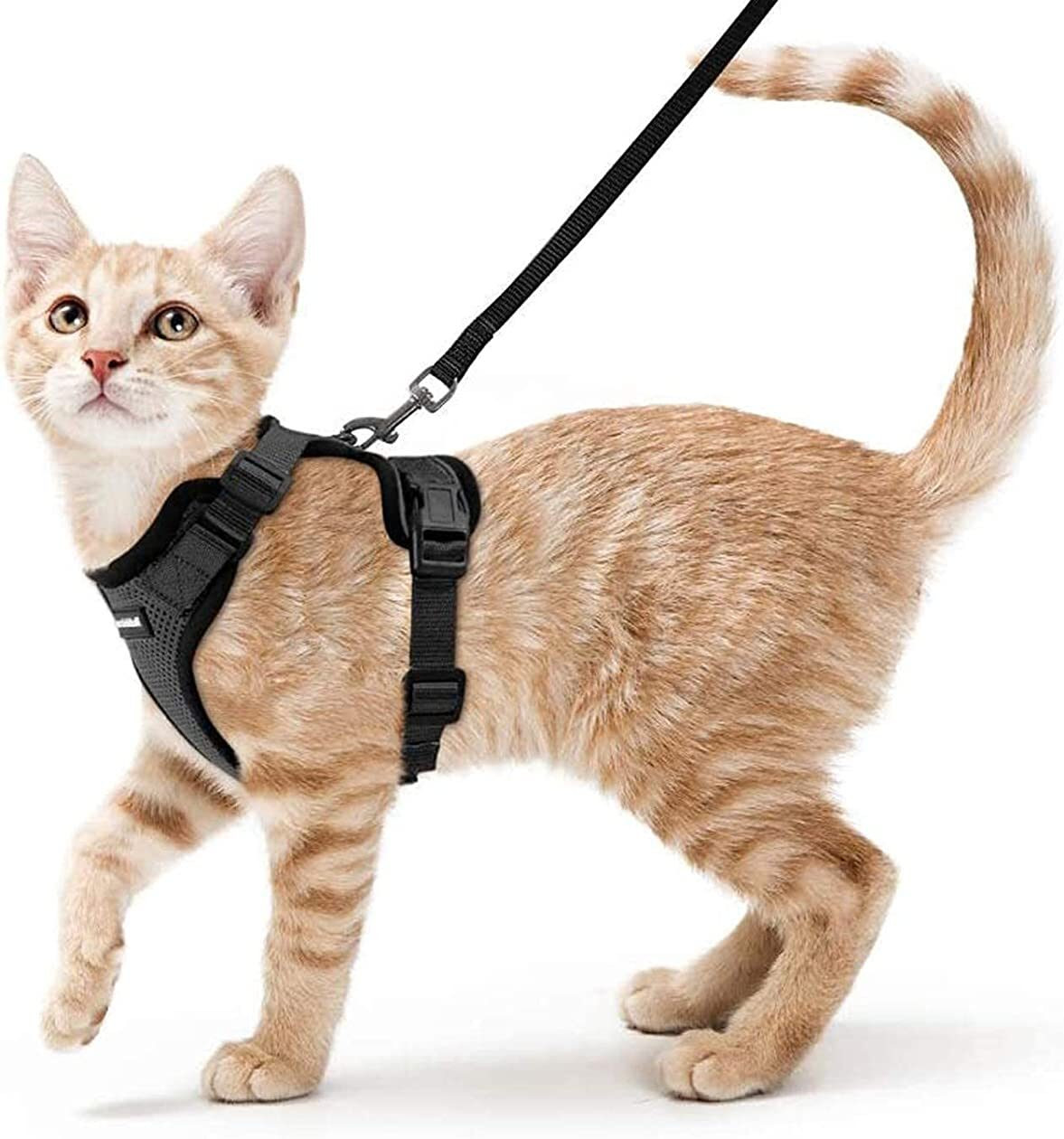 Rabbitgoo Cat Harness and Leash
Rabbitgoo Cat Harness and Leash
Rabbitgoo Cat Harness and Leash
Why We Recommend It: This vest-style harness is a fantastic budget-friendly option that doesn’t compromise on quality. Made from breathable material, it is surprisingly durable for its price point, making it a great choice for beginners and those seeking value.
Featured Product:
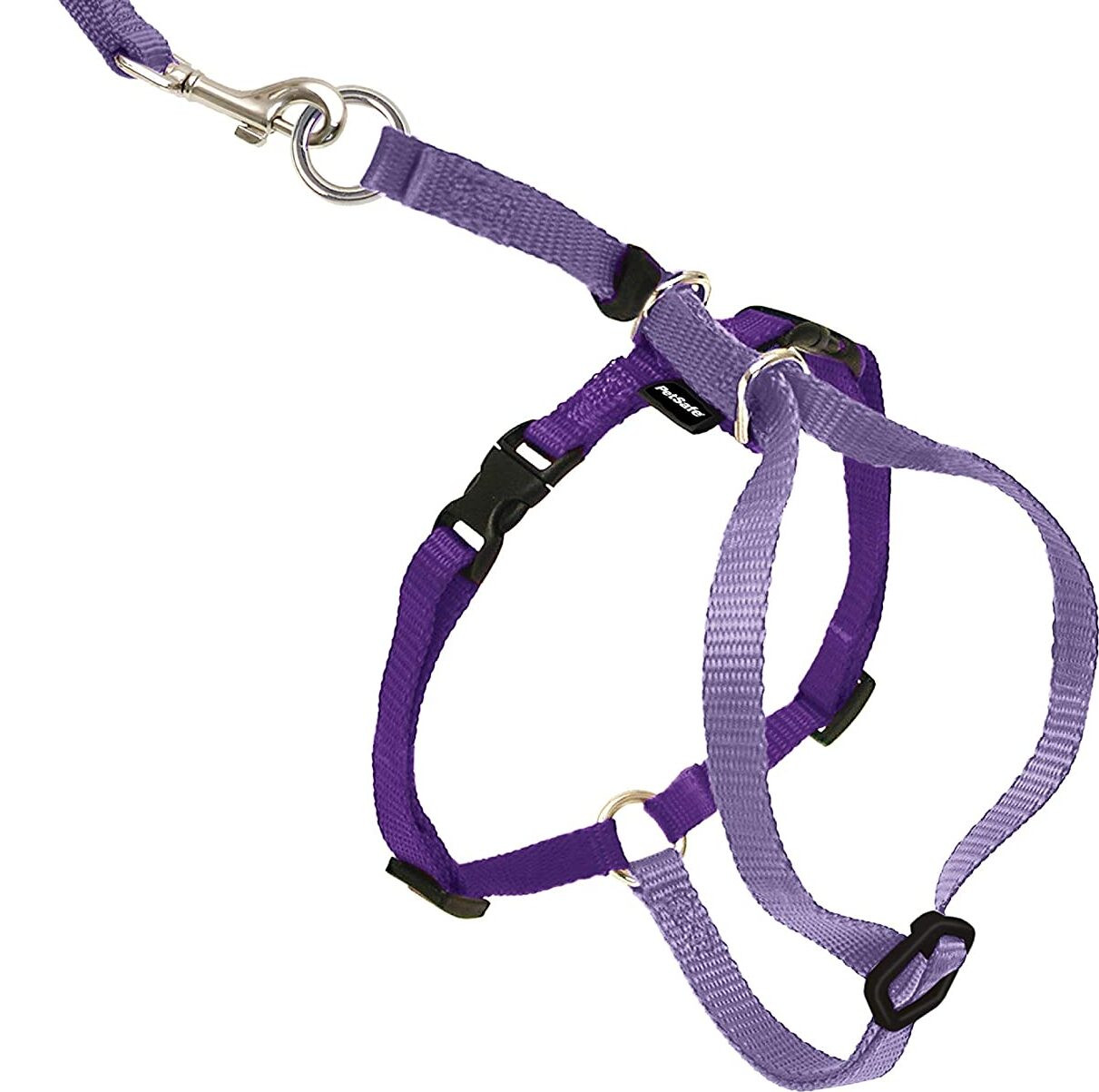 PetSafe Come With Me Kitty Harness
PetSafe Come With Me Kitty Harness
PetSafe Come With Me Kitty Harness
Why We Recommend It: This minimal-style harness is another excellent budget-conscious choice, particularly suitable for beginner cats. It includes a bungee-type leash that provides a bit of gentle give, and a sternum slide for an adjustable and secure fit. Its lightweight design makes it comfortable for cats getting used to wearing a harness.
Best Splurge-Worthy Cat Harness
Featured Product:
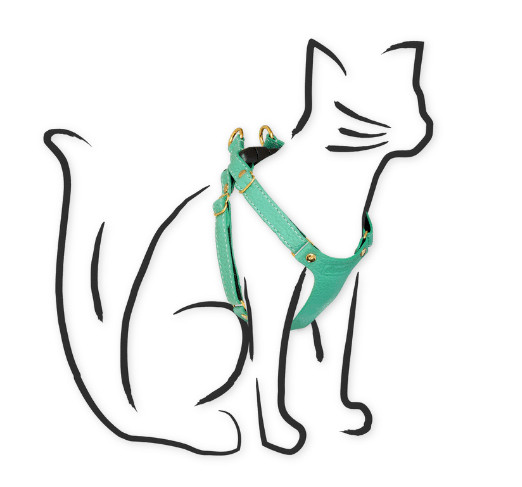 Supakit Cat Harness
Supakit Cat Harness
Supakit Cat Harness
Why We Recommend It: If you’re looking for a premium, long-lasting harness, the Supakit harness is an investment worth considering. Handcrafted with meticulous attention to detail, it’s available in both leather and cork (vegan) options and a range of beautiful colors. The cork option is also waterproof, adding to its durability and practicality.
Best Step-In Vest Style Cat Harness
Featured Product:
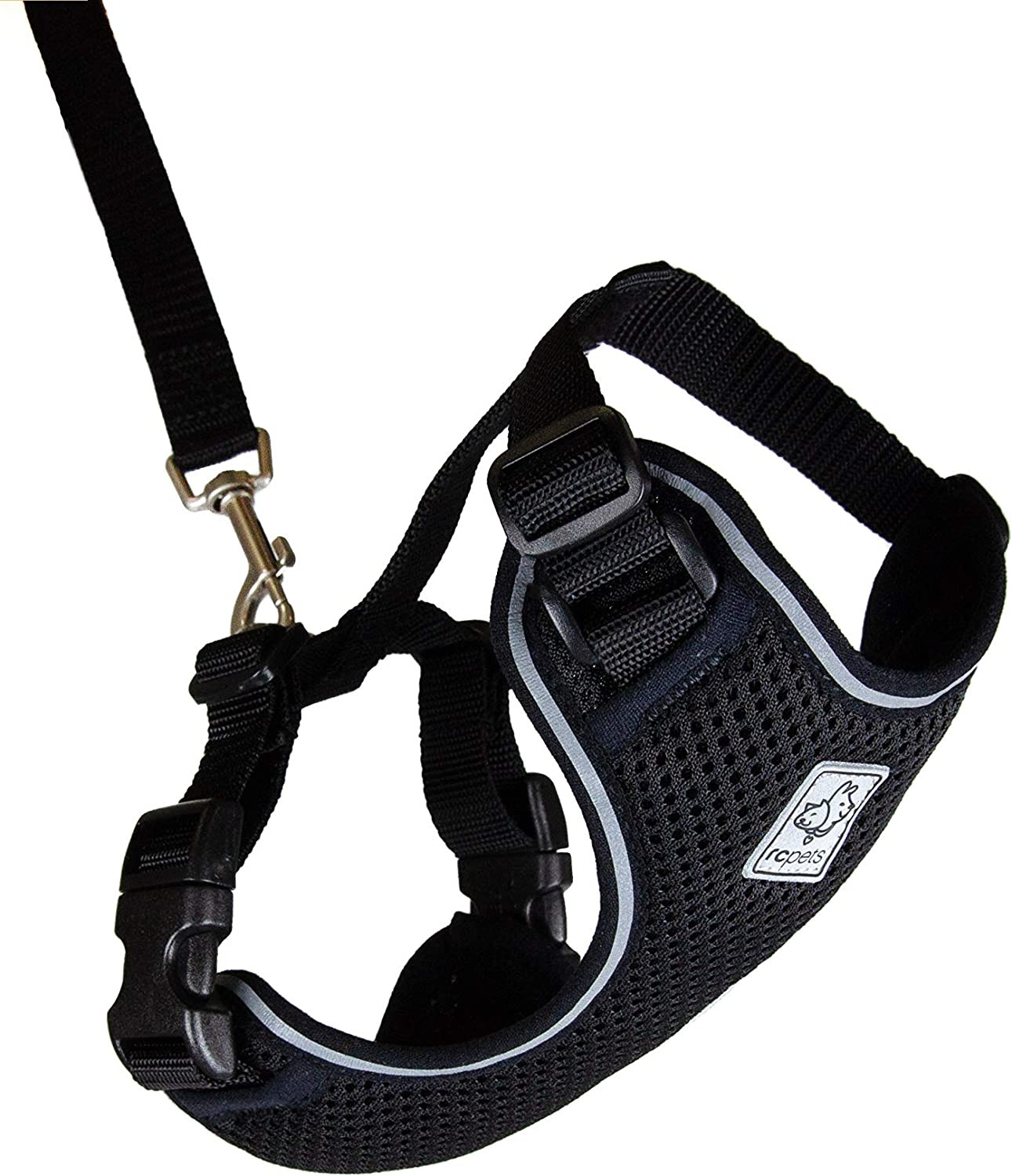 RC Pet Adventure Kitty Harness
RC Pet Adventure Kitty Harness
RC Pet Adventure Kitty Harness
Why We Recommend It: Specifically designed for cats, this vest-style harness offers a comfortable and secure step-in design. It features fully adjustable neck and chest straps for a customized fit, reflective elements for safety in low light, and excels at distributing pull force evenly.
Best Dog Harness to Consider for Your Cat
Featured Product:
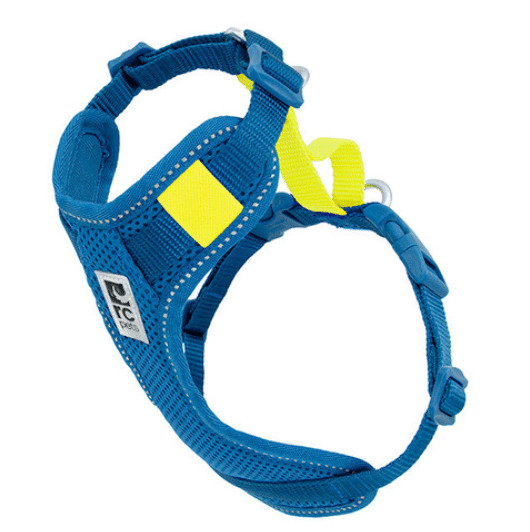 RC PETS MOTO CONTROL HARNESS
RC PETS MOTO CONTROL HARNESS
RC Pets Moto Control Harness
Why We Recommend It: For larger cats or those who need a particularly robust harness, the RC Pets Moto Control Harness in size XS can be a suitable option. While designed for dogs, the XS size often fits medium-sized cats well. It features two leash attachment rings for versatility, reflective lining for safety, and a built-in handle that can also function as a seatbelt loop for car rides.
Check out the harness on RC Pets site
Special Mention Harnesses
Featured Product:
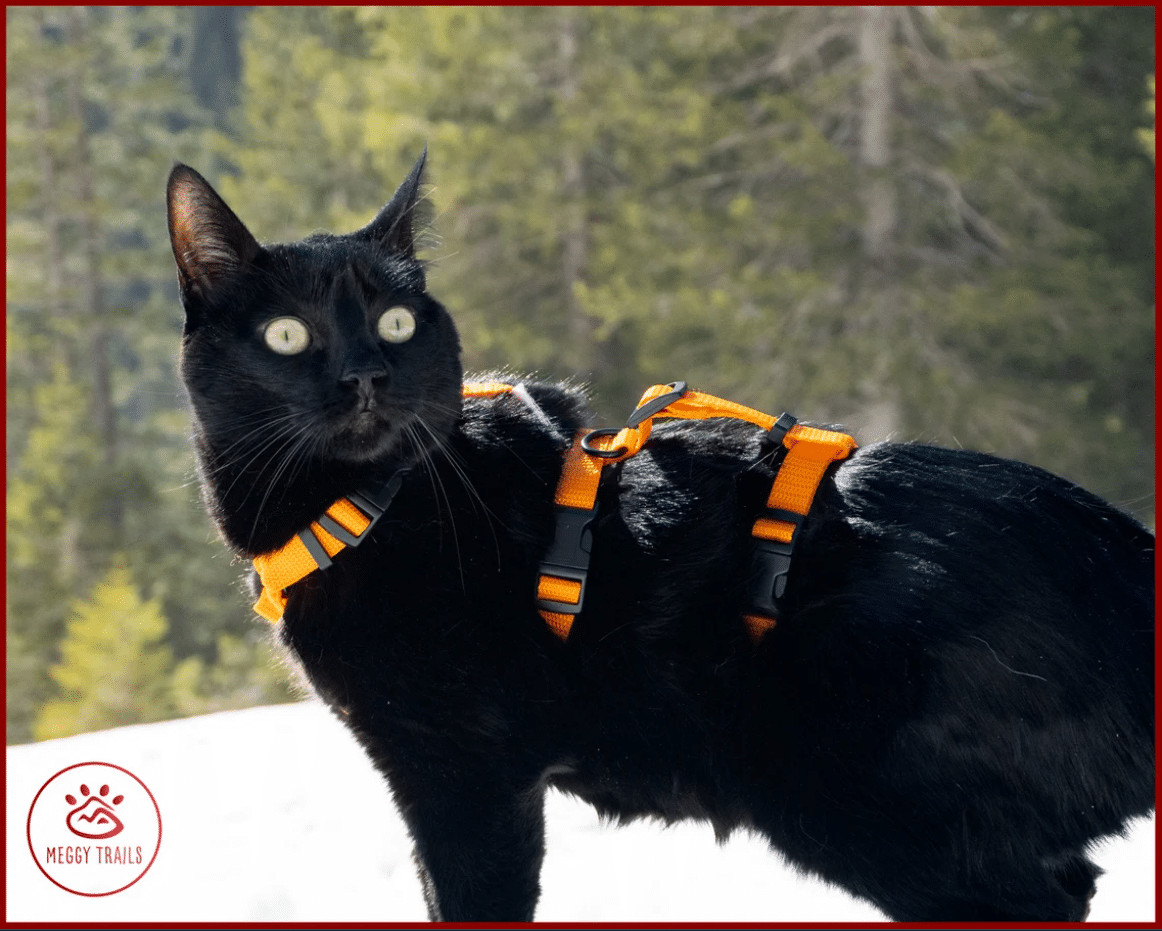 ESCAPE proof CAT HARNESS by MeggyTrails
ESCAPE proof CAT HARNESS by MeggyTrails
ESCAPE proof CAT HARNESS by MeggyTrails
Why We Recommend It: Designed specifically for escape artists, this harness by MeggyTrails is as close to “escape-proof” as you can get. It features six points of adjustment for a truly customized and secure fit, while remaining lightweight and comfortable for your cat.
Featured Product:
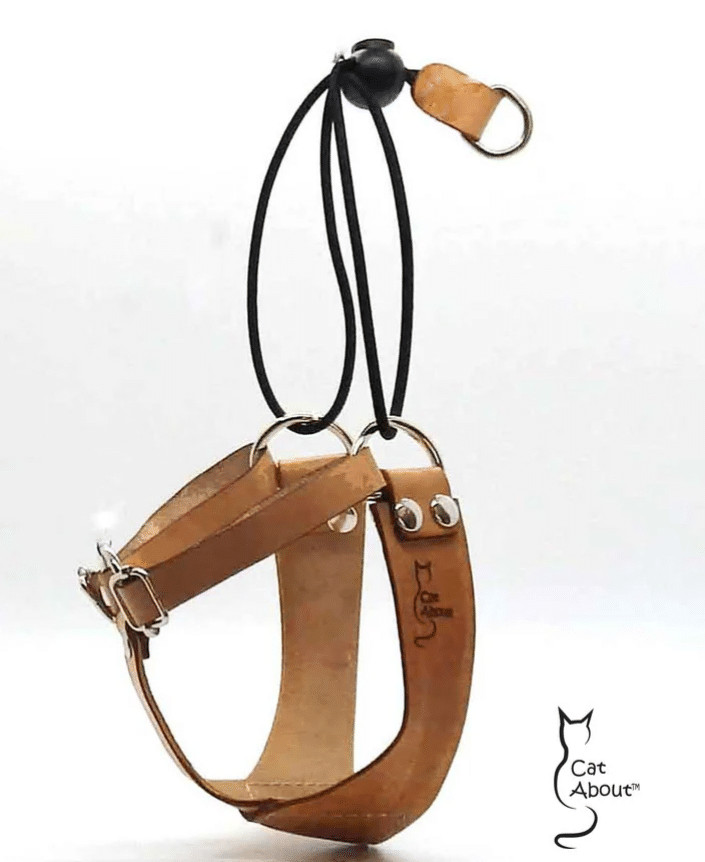 The OutBound Cat Harness™
The OutBound Cat Harness™
The OutBound Cat Harness™
Why We Recommend It: The OutBound Cat Harness™ is a custom-made option ideal for cats with unique body shapes, including larger or very slender cats. It offers exceptional support, particularly in custom and XL sizes, ensuring maximum comfort and a full range of motion. The contoured belly strap adds an extra layer of comfort and security.
Cat Backpacks: A Helpful Tool for Adventure Cats
Incorporating a cat backpack into your adventures can be incredibly beneficial during harness training and beyond. A backpack provides a secure and familiar space where your cat can retreat if they feel overwhelmed or frightened by unfamiliar sights, sounds, or other animals. Instead of panicking and trying to escape their harness, they can simply seek refuge in their backpack. Check out our Reviews section for cat backpack recommendations!
We hope this guide has been helpful in navigating the world of cat harnesses and leashes. Choosing the right gear and training your cat patiently will open up a world of outdoor exploration for you and your feline companion. Give your furry friend some extra love from us! ❤️

